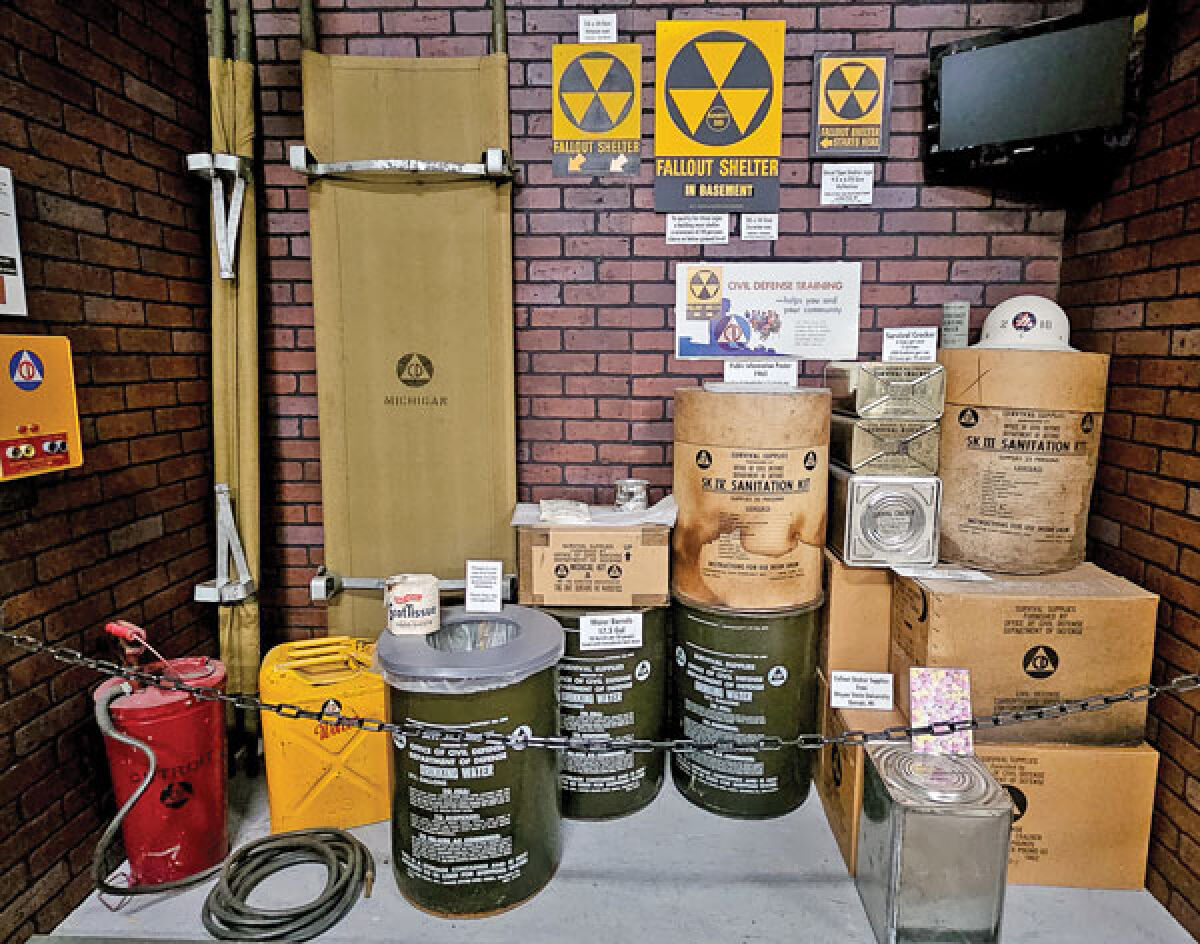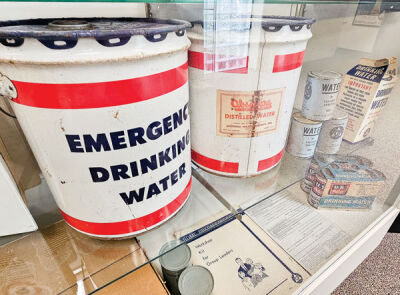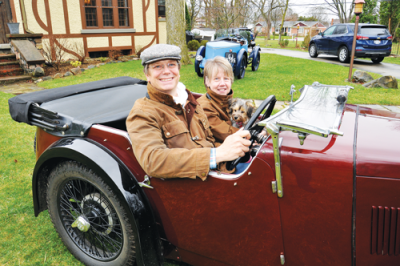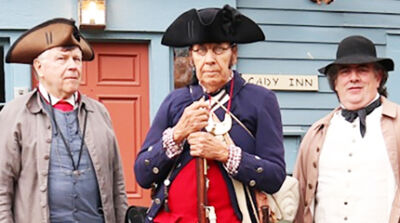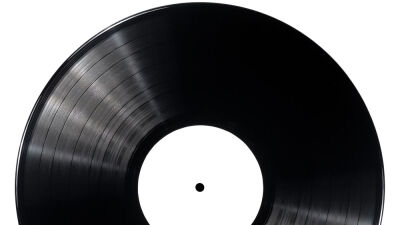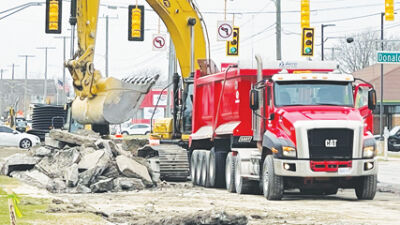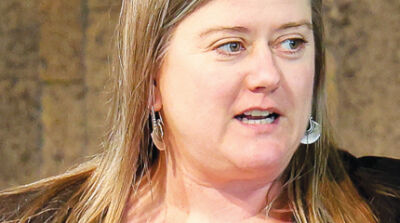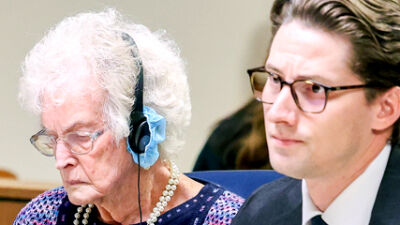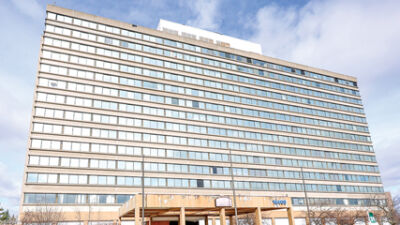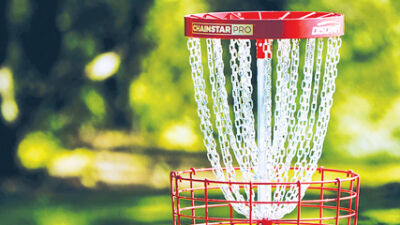EASTPOINTE — During the Cold War, which lasted from 1947 through 1989, many U.S. families prepared for a Russian nuclear attack by establishing fallout shelters.
The shelters, which could be a basement, cellar or an area tucked away in a nearby school or church, were designed to protect families from drifting radioactive particles should a nuclear attack occur.
The shelters — stocked with food, toiletries and other supplies — provided a safe place where families could temporarily stay. Eric Laskowski, founder of the online Michigan Civil Defense Museum, has a collection of fallout shelter supplies that he has currently loaned to the Michigan Military Technical & Historical Society. The exhibit officially opened April 6 and will be displayed for one year.
“Eric came to us with this idea. We thought it was great. He’s already had things in our museum,” said Wendy Richardson, museum board treasurer and public relations volunteer. “The items are from 1960 when (President John F.) Kennedy encouraged everyone to have their fallout shelter. After World War II, we saw what happened when there was a nuclear event.”
Laskowski’s exhibit tells the story of how the fallout shelters came to be, and how people planned their supplies. The idea was to have enough food, water and necessities for two weeks. Visitors who view the fallout display exhibit will see a variety of fallout shelter artifacts up close. Laskowski found the items in a variety of ways, including antique stores, estate sales, yard sales and online.
In an email, Laskowski said he hopes visitors who view the exhibit will “see a small example of what efforts were put in place for humanity’s survival.”
“We’ve had a good response so far,” Richardson said of the visitors coming through. “If you’re Gen X or older, it’s something we know about.”
Throughout the decades, a large number of U.S. citizens purchased their supplies from the Office of Civil Defense. On display at the MIMTHS are medical kits, aspirin, cotton swabs, soap, razors, toilet paper, rubbing alcohol and small baggies of safety pins.
Food items included large barrels of survival crackers and biscuits. It also was suggested to store foods that required little or no water, took up minimal storage space and had a long shelf life.
Some families purchased a large barrel of water that would transform into a toilet once the water was gone. A lot of families also stored Geiger radiation measurement kits. When asked what the most unusual fallout shelter artifact was he found, Laskowski said it was the stationary ventilation bicycle used to circulate air while inside a shelter.
In metro Detroit, one large fallout shelter was located at Northland Center Mall, in Southfield, which had a 7,020-person capacity. Midland Elementary School, in Highland Park, could fit up to 90 people in its fallout shelter.
Companies were contacted to make the fallout shelters, while some people made their own following instructions found in brochures. Fallout shelters also doubled as tornado shelters.
“There was a lot of infrastructure and education on what people could do to reassure them. They were metal and had some sort of entrance,” Richardson said. “If you had a basement, that could be used as one. If you lived near a church or a school, that would be your fallout shelter.”
During the Cold War, individuals displayed official fallout shelter signs that included three upside-down triangle shapes inside a circle. The Cold War ceased in the late 1980s with the collapse of the former Soviet Union, making fallout shelters obsolete.
Laskowski said he has been inside an actual fallout shelter.
“It’s nothing special to be in a fallout shelter. You could be in a basement, a hallway, on an upper floor or main floor,” he said. “The shelter areas are where there is more material between you and the outside. Ninety percent of the shelters are still around, but probably less than 2% of them have signs still in place, with even less than that still having supplies still there.”
People from all over the country and world have visited the MIMTHS. To date, people from 26 U.S. states and 18 countries — including China, Poland, Brazil and Canada — have visited.
The museum is open from 10 a.m. to 5 p.m. Saturdays and from noon to 4 p.m. Sundays. Admission is free for Eastpointe residents. For nonresidents, the entry fee is $5 per person, and $3 for military personnel, senior citizens and students, and $7 per family.
The Michigan Military Technical & Historical Museum is located at 16600 Stephens Road. Visit mimths.org for more information.
A speaker from the museum will be featured at the Eastpointe-Roseville Chamber of Commerce’s monthly coffee hour from 9 to 10 a.m. May 21 at Resurrection Cemetery, 18201 Clinton River Road in Clinton Township. The event is free for members and $5 for nonmembers. Register at events@erchamber.com.
 Publication select ▼
Publication select ▼